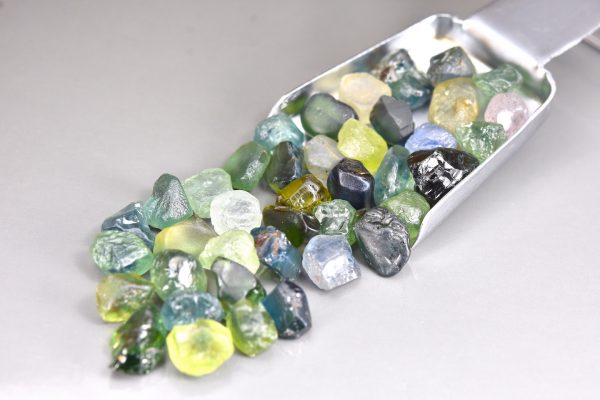Uncategorized
Misconceptions on “Ethical” Sourcing of Sapphires
End users of gemstones are increasingly paying more attention to not just the beauty of the gem but the story behind its sourcing. Gems are supposed to be symbols of love, and as such they should have story that matches this symbol. Most people do not want to inadvertently fund slave labor, terrorism, drugs, child labor, and the list goes on. Therefore, ethically-conscious people will always have this at the back of their mind when purchasing a gem.
Sourcing of diamonds and ruby is a topic for another day! This blog post will focus more on sapphires, and the misconceptions surrounding sourcing, traceability, and ethics.

- Sapphire mining must meet the standards of the United States, Canada or other comparable advanced countries
The fact is that most sapphires you see in the market come from low and middle-income countries. Comparing mining practices and regulations with an advanced country like the United States is simply unrealistic and frankly unfair. For us at Choice Gems Co, we view ethical sourcing as supporting the economy of communities that solely depends on artisanal mining and farming. We view ethical sourcing as sourcing gemstones that are mined in the context where the miners well-being and the environment is taken into consideration.
2. It is doubtful to know that a company can claim to know where there sapphires come from?
Reality: As you consumer you have every right to doubt. Retailers and end-users have to be cautious about claims they read on traceability and ethical sourcing. To be fairly accurate about this claim you have to involved in the mining or with the miners or trusted brokers that work directly with the miners. Our sourcing is very well controlled. For instance in Nigeria and Australia we work directly with miners, so essentially we buy what they dig. Having a presence in the source countries is invaluable for our company, where we do not have to rely of claims but on a lived reality. We do not sit down in our office in Seattle and claim that our stones stones are ethically sourced – it is a lived reality for us where we consider ourselves a critical part of the mining communities! Being part of the community is critical to ethical sourcing.
3. All sapphires in the market are heated
This is true for majority of sapphires you see in the jewelry store. However, there is still a small percentage of sapphires in the market that is unheated. Part of ethical sourcing and business practices is to be able to say with an almost 100% certainty that a sapphire is heated or unheated. There is no way to know this if you are not involved in the journey of the sapphire from mine to the market, except you subject the stone lab testing. Heating is a popular treatment for sapphire, to help improve clarity. If you are involved with the sourcing of the gems directly or indirectly, you can have the confidence to tell. The only other way is to send to the lab.
4. Every business must donate to charity to help the communities where stones are sourced?
Every business have their own philosophy regarding charity and donation models. A business that do not engage in philanthropy in the source communities should not be viewed negatively. After all, the primary goal for every business is to generate revenue and make profits for shareholders. However, when it comes to the gem industry, we feel that it is critical that beyond doing making profits, one has to at least care for the communities that sits on this wealth . At Choice Gems Co, we believe that charity should not just be done for the sake of it, or to look good with consumers. When we think of charity, we think sustainability, we think “win-win”, and lastly we think “scale of impact”. For example, the water projects we have embarked on in the past, did not come as a result of our own determination on what should be important to the community. It was a concern mentioned to us by the community as a priority they would want addressed. The second step was how sustainable was it going to be? In solving this potential challenge we hired a local drilling company to build and maintain it. Finally, what is the potential impact? The share economic gain of not wasting 2 – 3 hours everyday traveling to get water is one, and secondly the prevention of waterborne diseases will significantly cut economic losses and lead to more healthier lives in the community.
Click here to learn more about our involvement from the mine to the market for the sapphires we offer.
